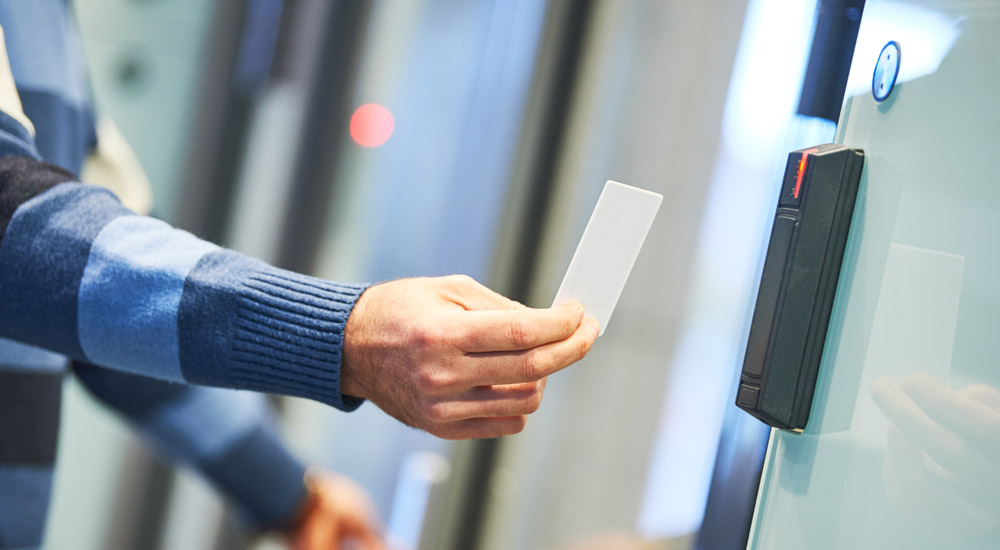Ensuring the safety and security of condo residents is a top priority for property managers and owners. Effective access control is a crucial component of a comprehensive security strategy, helping to prevent unauthorized entry and protect residents and their belongings. In this blog, we will explore best practices for access control in condo buildings, offering insights into how to create a secure and welcoming environment.
Top 6 Best Practices For Access Control In Condo Buildings:
-
Implement a Multi-Layered Access Control System
Best Practice: Utilize a multi-layered access control system that includes a combination of physical barriers, electronic systems, and security personnel.
Details:
- Physical Barriers: Install secure doors, gates, and fencing to restrict access to the property. Ensure that these barriers are sturdy and well-maintained.
- Electronic Systems: Use keycard or fob-based entry systems, biometric scanners, or mobile app-based access to control entry points. These systems should be regularly updated and tested for reliability.
- Security Personnel: Employ trained security guards to monitor access points, conduct regular patrols, and respond to any security breaches. Their presence acts as a deterrent to potential intruders.
-
Enhance Surveillance and Monitoring
Best Practice: Integrate comprehensive surveillance systems with access control measures to monitor all entry and exit points.
Details:
- CCTV Cameras: Install high-resolution cameras at all access points, including entrances, exits, parking garages, and common areas. Ensure that cameras cover all angles and blind spots.
- Remote Monitoring: Utilize systems that allow for remote monitoring by security personnel or property managers, providing real-time visibility of the premises.
- Regular Audits: Conduct regular audits of surveillance footage to identify any suspicious activity and ensure that the system is functioning correctly.
-
Implement Visitor Management Systems
Best Practice: Use visitor management systems to track and control guest access to the property.
Details:
- Visitor Registration: Require all visitors to register at the front desk or security office. Collect relevant information, such as name, purpose of visit, and the resident they are visiting.
- Temporary Access Credentials: Provide temporary access cards or codes to visitors, which are time-limited and restricted to specific areas.
- Digital Logs: Maintain digital logs of all visitor entries and exits to track patterns and identify any anomalies.
-
Ensure Proper Lighting And Visibility
Best Practice: Maintain adequate lighting and visibility around all access points to deter criminal activity and enhance safety.
Details:
- Exterior Lighting: Install bright, energy-efficient lighting around building entrances, parking areas, and pathways. Use motion-activated lights to conserve energy and provide additional security.
- Interior Lighting: Ensure that hallways, stairwells, and common areas are well-lit at all times. This not only deters criminals but also provides a sense of safety for residents.
- Regular Inspections: Conduct regular inspections to ensure all lighting fixtures are functioning correctly and replace any burnt-out bulbs promptly.
-
Educate Residents On Security Protocols
Best Practice: Regularly educate residents about the importance of access control and their role in maintaining security.
Details:
- Security Meetings: Hold periodic security meetings to discuss access control measures, recent incidents, and safety tips.
- Communication Channels: Use newsletters, emails, and social media to keep residents informed about security updates and best practices.
- Resident Participation: Encourage residents to report any suspicious activity or security concerns to the property management or security team promptly.
-
Conduct Regular Security Assessments
Best Practice: Perform regular security assessments to identify vulnerabilities and improve access control measures.
Details:
- Professional Audits: Hire security professionals to conduct thorough assessments of your access control systems and procedures. They can provide expert recommendations for improvements.
- Resident Feedback: Gather feedback from residents about their security concerns and suggestions. This can help identify areas that need attention and foster a community-focused approach to security.
- Continuous Improvement: Regularly review and update access control policies and technologies to stay ahead of emerging threats and ensure the highest level of security.
Conclusion:
Effective access control is essential for maintaining a secure and safe environment in condo buildings. By implementing a multi-layered approach, enhancing surveillance, managing visitor access, ensuring proper lighting, educating residents, and conducting regular security assessments, property managers can significantly improve the overall security of their properties.
At Akin Force, we specialize in providing tailored security solutions for residential properties. Our comprehensive access control systems and professional security personnel ensure that your condo building remains safe and secure. Contact us today to learn more about our services and how we can help you enhance your condo security.

